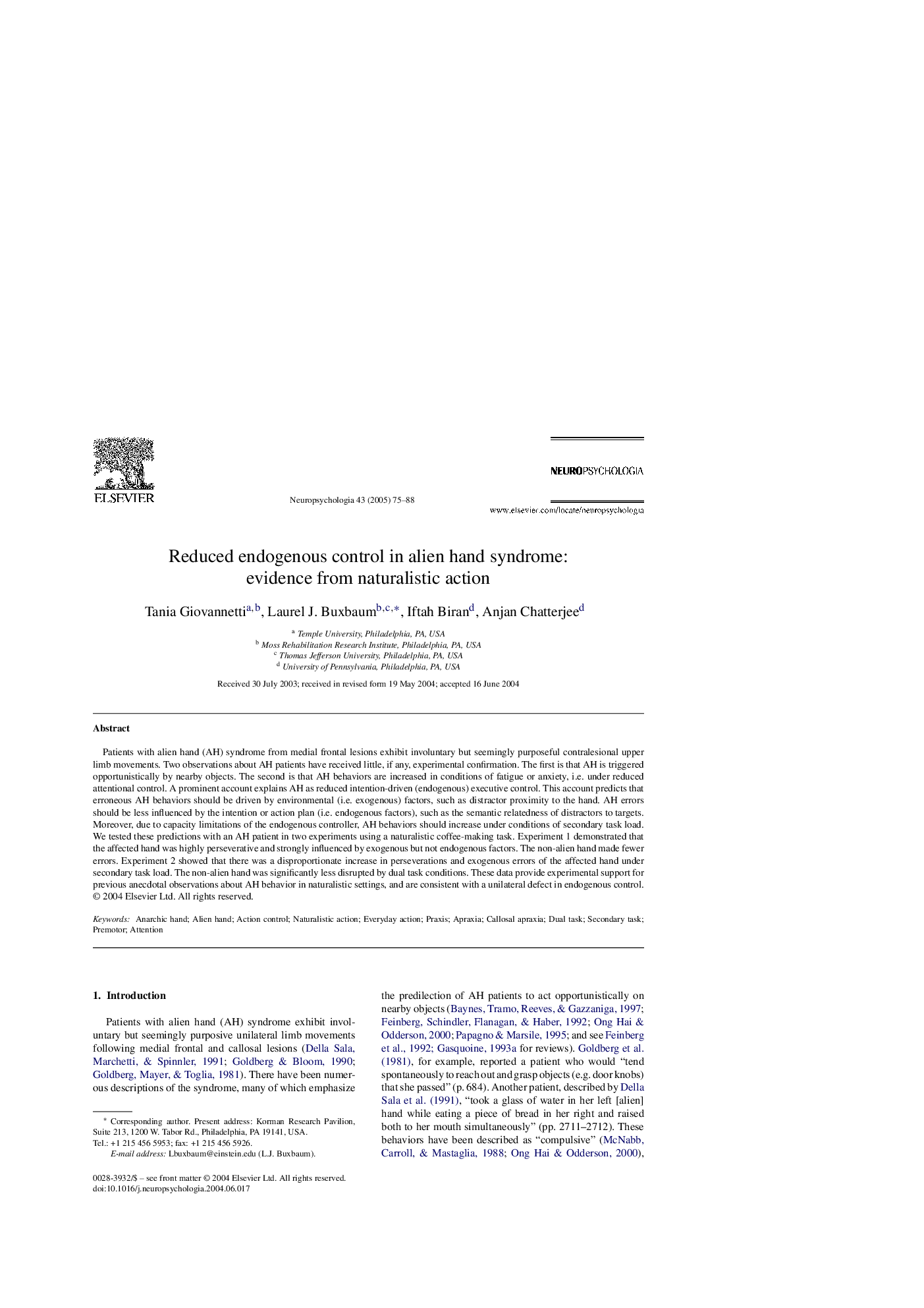| Article ID | Journal | Published Year | Pages | File Type |
|---|---|---|---|---|
| 10467192 | Neuropsychologia | 2005 | 14 Pages |
Abstract
Patients with alien hand (AH) syndrome from medial frontal lesions exhibit involuntary but seemingly purposeful contralesional upper limb movements. Two observations about AH patients have received little, if any, experimental confirmation. The first is that AH is triggered opportunistically by nearby objects. The second is that AH behaviors are increased in conditions of fatigue or anxiety, i.e. under reduced attentional control. A prominent account explains AH as reduced intention-driven (endogenous) executive control. This account predicts that erroneous AH behaviors should be driven by environmental (i.e. exogenous) factors, such as distractor proximity to the hand. AH errors should be less influenced by the intention or action plan (i.e. endogenous factors), such as the semantic relatedness of distractors to targets. Moreover, due to capacity limitations of the endogenous controller, AH behaviors should increase under conditions of secondary task load. We tested these predictions with an AH patient in two experiments using a naturalistic coffee-making task. Experiment 1 demonstrated that the affected hand was highly perseverative and strongly influenced by exogenous but not endogenous factors. The non-alien hand made fewer errors. Experiment 2 showed that there was a disproportionate increase in perseverations and exogenous errors of the affected hand under secondary task load. The non-alien hand was significantly less disrupted by dual task conditions. These data provide experimental support for previous anecdotal observations about AH behavior in naturalistic settings, and are consistent with a unilateral defect in endogenous control.
Related Topics
Life Sciences
Neuroscience
Behavioral Neuroscience
Authors
Tania Giovannetti, Laurel J. Buxbaum, Iftah Biran, Anjan Chatterjee,
